Key takeaways:
- Fake websites often imitate legitimate ones using misleading designs and poor grammar, making vigilance essential for consumers.
- Consumer protection is crucial for fostering trust between consumers and businesses, helping prevent scams and holding businesses accountable.
- Tools like website reputation checkers and domain verification aid in detecting fake websites, while personal instinct and research enhance online safety.
- Reporting suspicious sites contributes to community safety and promotes quicker action against fraud, ultimately creating a safer online environment.
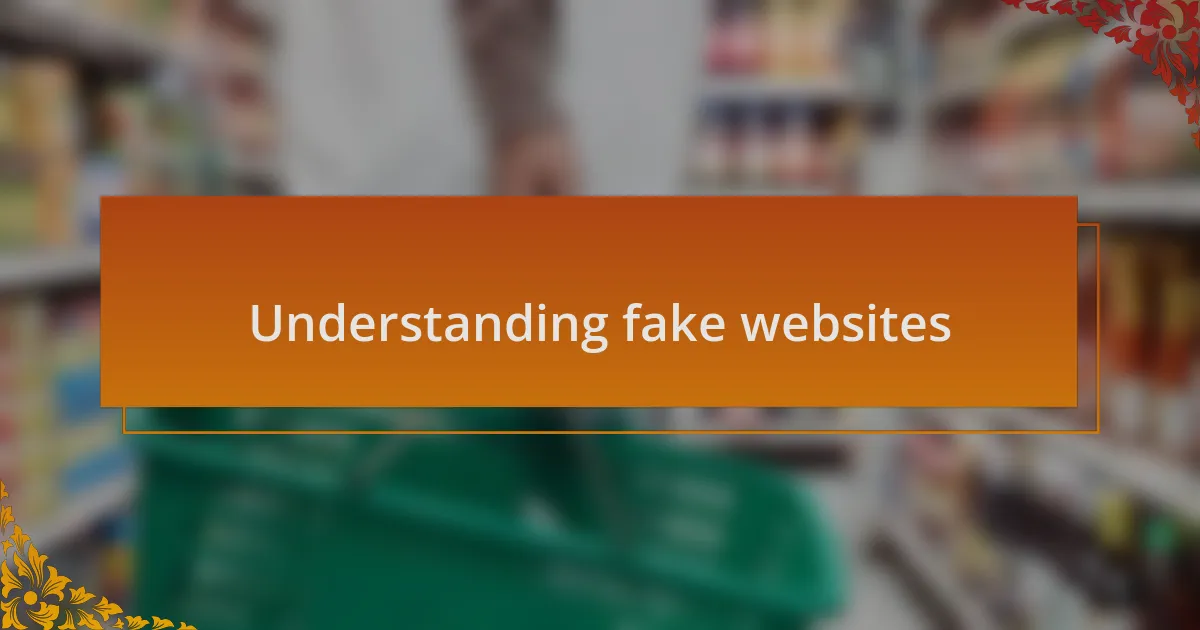
Understanding fake websites
Fake websites are often designed to mimic legitimate ones, making them difficult for the average consumer to spot. I remember once nearly falling for a phishing site that looked exactly like my bank’s login page. It made me realize just how easy it can be to lose sight of the details when you’re in a rush.
What surprises me is how these fraudulent sites exploit our trust. They often use official-looking logos and design elements to create a sense of authenticity. Have you ever found yourself questioning the legitimacy of a website? It’s easy to overlook red flags when we’re busy or distracted.
Another indicator of a fake website is poor grammar or unusual web addresses. I once visited a site that claimed to offer unbelievable deals, only to notice several typos in their terms and conditions. It made me wonder how many people might fall for such traps without paying attention to those little details—we need to train ourselves to be vigilant.
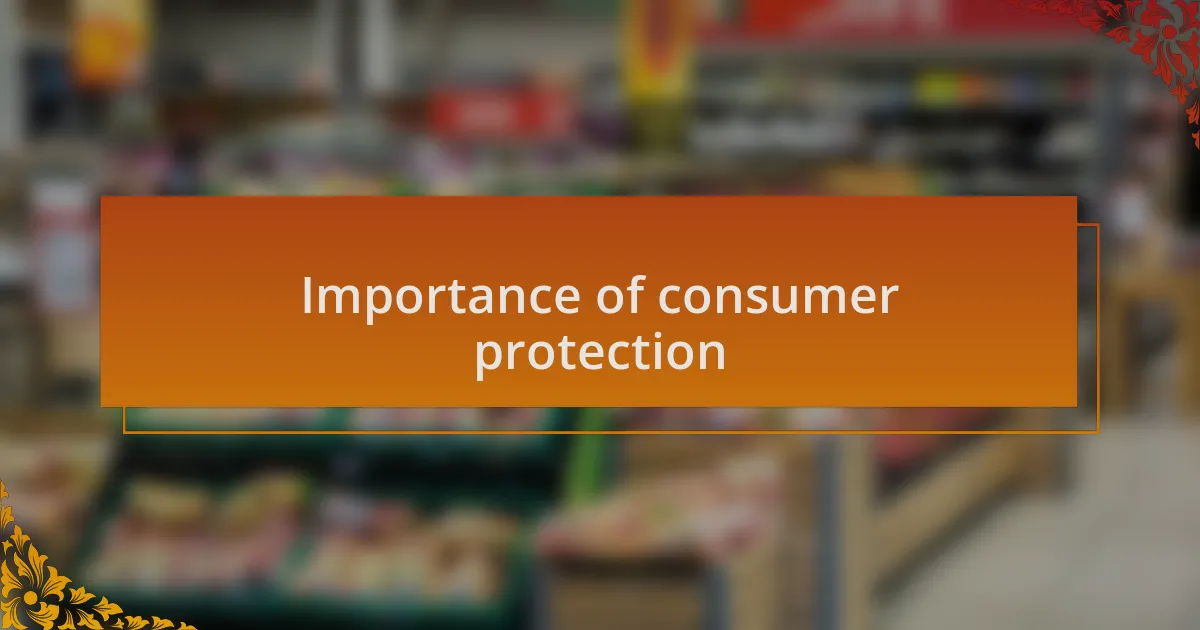
Importance of consumer protection
Consumer protection plays a vital role in maintaining trust between consumers and businesses. When we feel safe making purchases or sharing personal information, it fosters a healthier market environment. Reflecting on my experiences, I recall times when knowing there were regulations in place gave me confidence to shop online without fear.
One aspect I deeply value about consumer protection is its proactive approach to preventing scams. It’s not just about reacting to fraud; it’s about creating a system that safeguards our interests, empowering us to make informed choices. I remember a friend who lost money to a counterfeit retailer; naturally, it left her hesitant to buy anything online for months. Imagine how different her experience could have been with proper consumer protections in place!
Additionally, effective consumer protection measures help to hold businesses accountable. Every time I see a legitimate complaint addressed publicly, it seems to set a precedent that encourages better practices across the industry. Have you noticed how this can significantly change a company’s approach to customer service? When businesses know they are being watched, consumers often benefit from a higher standard of service and quality.
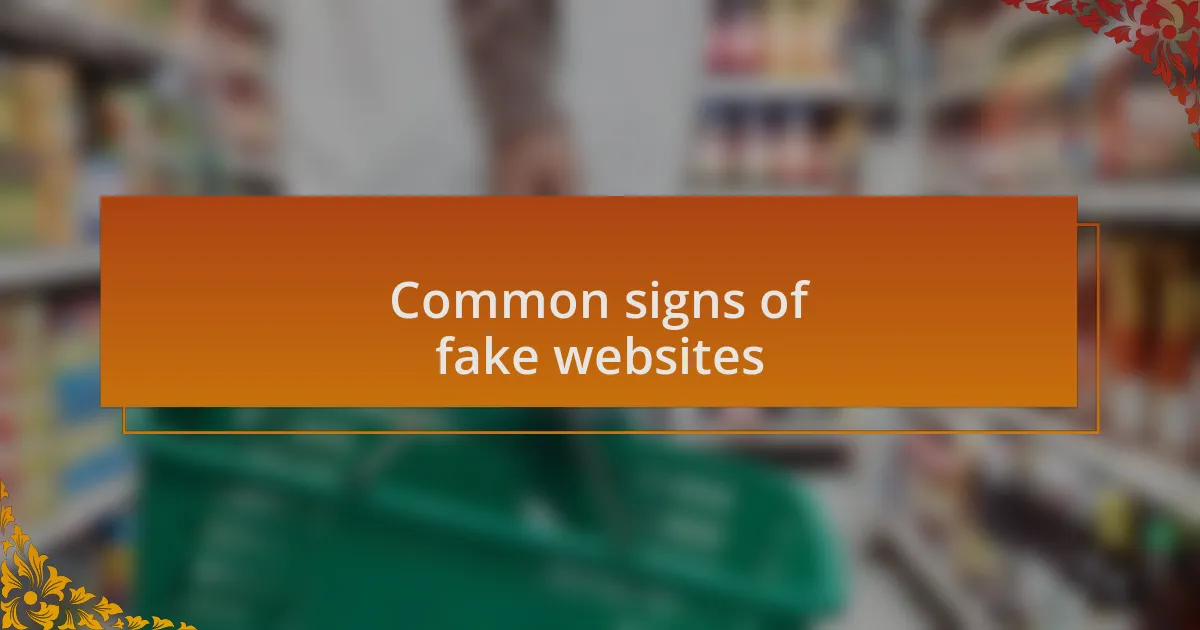
Common signs of fake websites
When browsing, one of the first signs of a fake website is the presence of poor design and functionality. I remember landing on a site hastily designed with glaring typos and low-quality images, which immediately made me question its legitimacy. In my experience, a well-designed website often signifies a legitimate business that invests in its online presence.
Another red flag to look for is an unsecured URL. If the web address begins with “http://” instead of “https://”, it signals a potential safety issue. I once ignored this warning on an e-commerce site and ended up compromising my personal information. Let me tell you, the feeling of vulnerability that followed was unsettling, to say the least.
Lastly, take a close look at the contact information provided. Often, fake websites will have vague or missing contact details, making it hard to validate their authenticity. I vividly remember finding a website that only had a “contact us” form with no phone number or physical address listed, which immediately raised my suspicions. Wouldn’t you feel the same hesitation? A trustworthy business usually provides multiple ways for customers to reach out, ensuring transparency and accountability.
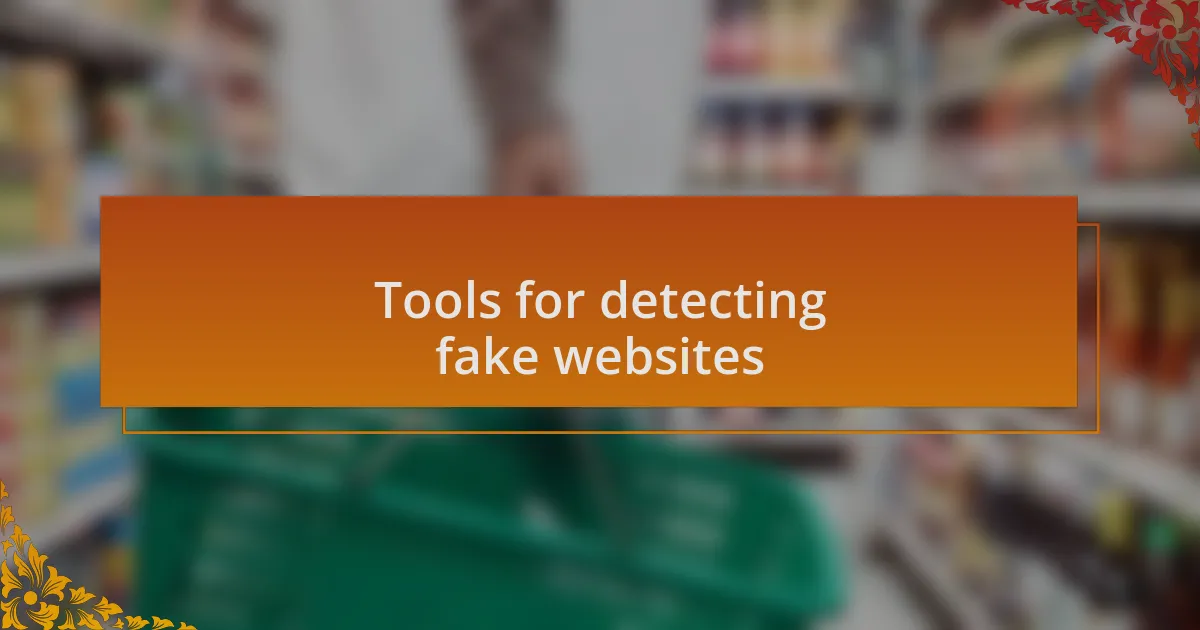
Tools for detecting fake websites
When it comes to detecting fake websites, I often turn to website reputation checkers like McAfee SiteAdvisor or Norton Safe Web. These tools evaluate a site’s safety based on user reviews and various security metrics. I remember using such a tool before making a significant online purchase, and the peace of mind it provided was invaluable. Have you ever felt that nagging doubt before entering your credit card information?
Another resource I find incredibly useful is the use of domain verification tools. Websites like WHOIS can help you check who owns a domain and when it was registered. It’s surprising how many fake sites have been around for only a short time with little background information available. I recall discovering that a site offering exclusive discounts had been registered just weeks prior; it made me think twice about the deal. Understanding domain history adds another layer of insight that could save you from a potential scam.
Browser extensions can also be powerful allies in this battle against fake websites. Tools such as Web of Trust (WOT) provide real-time feedback about a website’s reputation while you browse. I installed this extension recently, and its alerts about potentially dangerous sites have significantly reduced my online risks. Have you tried out browser extensions before? They can really enhance your online safety experience if used wisely.
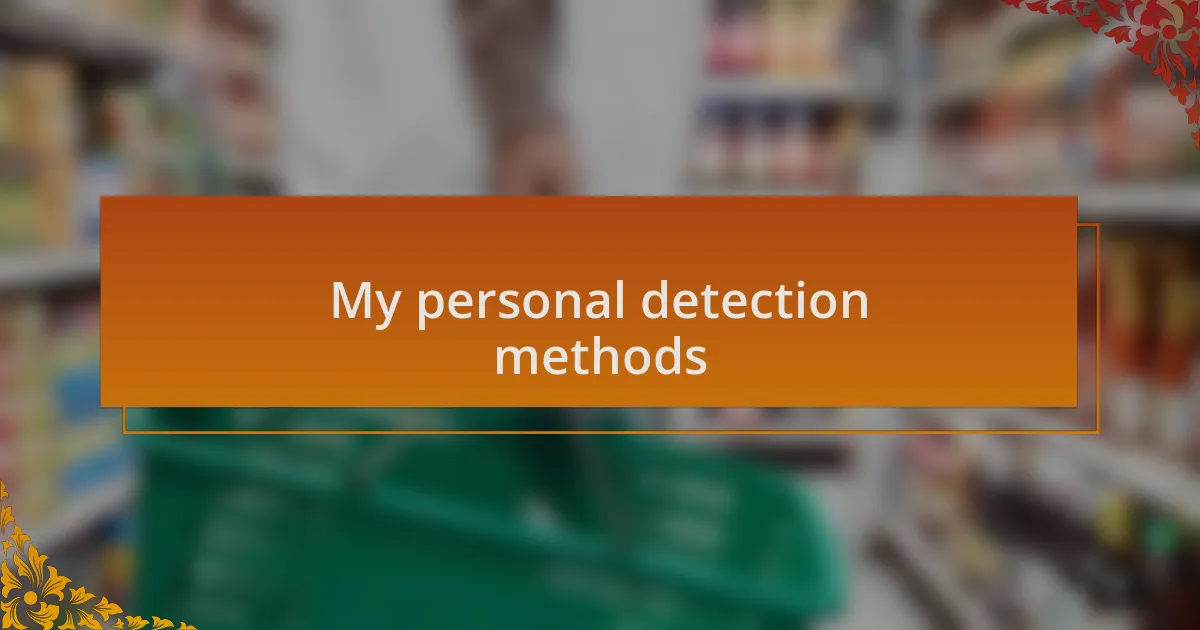
My personal detection methods
I often trust my instincts when it comes to evaluating a website’s credibility. If something feels off—whether it’s poor design, excessive pop-up ads, or awkward grammar—I tend to steer clear. I vividly recall landing on a site that seemed to offer free gifts; the layout was cluttered, and I couldn’t shake the feeling that it was too good to be true. My gut reaction saved me from a potential headache.
Another method I apply involves checking for clear contact information and policies. Legitimate businesses usually provide easily accessible customer service details and terms of service, while fake sites often bury this information or omit it altogether. I remember a time when I was tempted to buy a highly rated product from a site that barely mentioned how to even get in touch with them. That lack of transparency raised red flags for me, prompting me to walk away.
Lastly, I have developed a habit of performing a quick search for reviews or complaints about a site. If I find multiple accounts of negative experiences or warnings from other users, I know to back off. I can’t help but think about how many potential scams I’ve avoided this way; each time I see a collective voice of caution, I feel empowered to make safer choices online. Have you ever looked for reviews before making a purchase? It’s one of those steps that can truly make a difference.
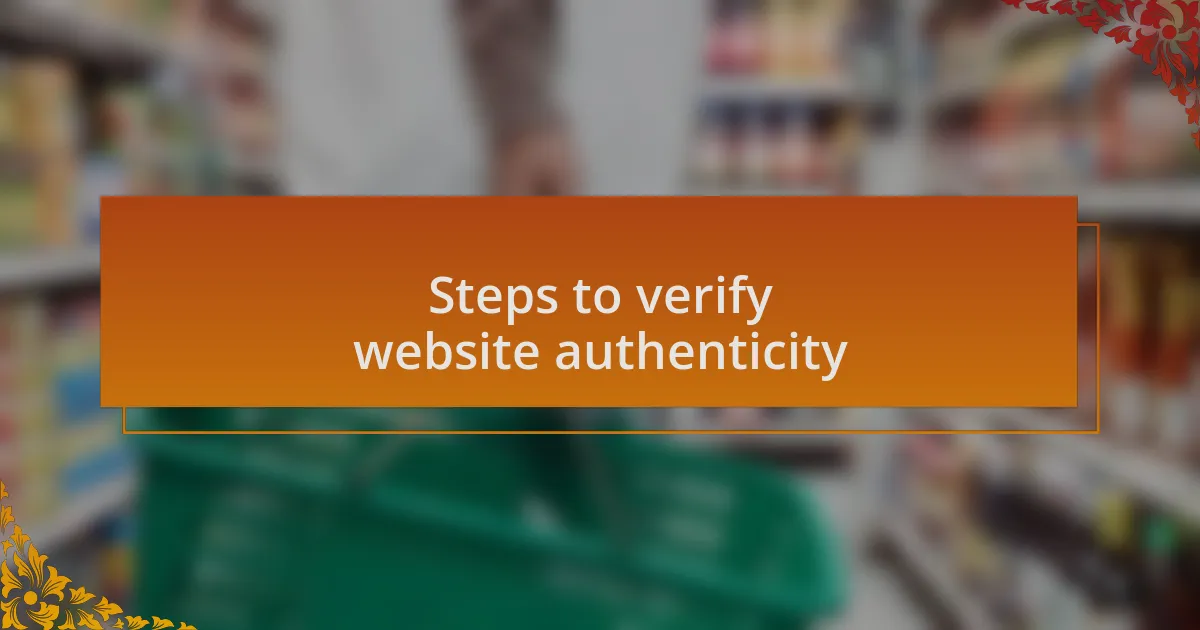
Steps to verify website authenticity
When I want to verify a website’s authenticity, I always start by checking its URL. A secure site should have “https://” instead of just “http://.” I learned this the hard way when I accidentally entered my credit card information on a site that looked legitimate but only had the basic “http://” in its address. That scare taught me the importance of being vigilant about the security of a website.
Next, I dive into evaluating the site’s design and content. An authentic site often has a polished look and coherent text. I recall visiting a supposed travel booking website that was riddled with spelling mistakes and mismatched fonts. It was a glaring sign that something wasn’t right. Have you ever noticed how a website’s design can give clues about its reliability?
Finally, I take a moment to review the site’s age. Websites that have been around for a while, especially those with established reviews and user feedback, tend to be more trustworthy. I once hesitated to make a purchase from a new site with no online footprint. It felt like stepping into uncharted waters without a life vest. This experience reinforced my belief that a little research about a site’s history can save you from unnecessary risks.
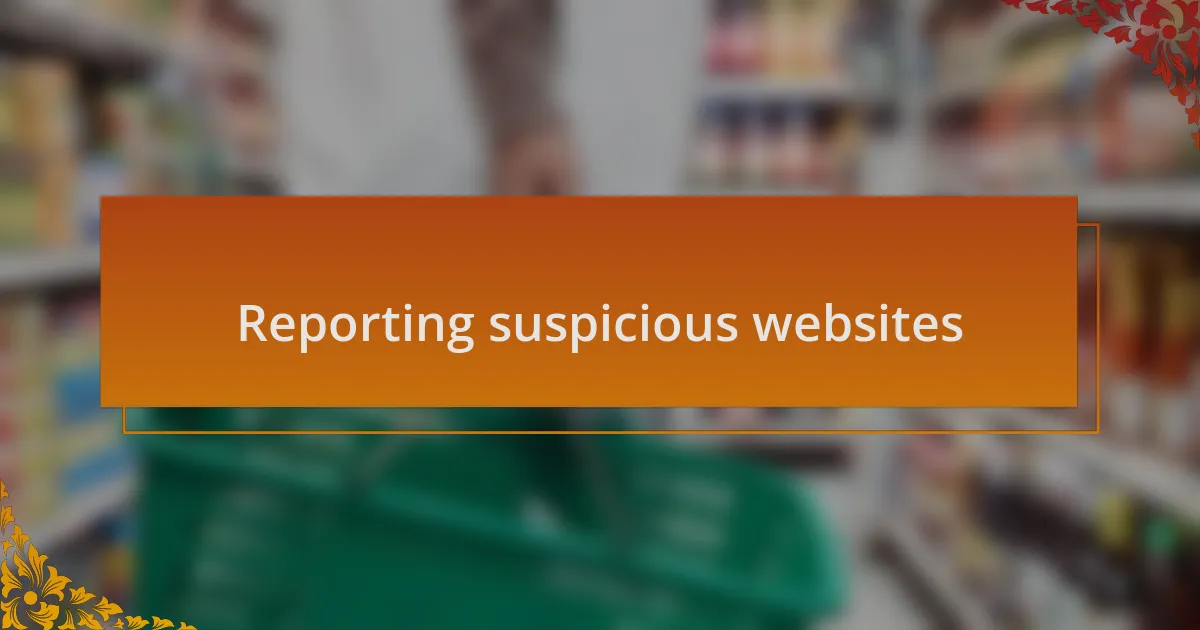
Reporting suspicious websites
Reporting suspicious websites is a crucial step I take whenever I encounter something that raises red flags. I remember stumbling across a site that promised unbelievable discounts on popular electronics. My gut told me it was too good to be true. After some quick research, I found that many users had reported it for scams. The act of reporting made me feel like I was taking action, and it’s empowering to know I could potentially protect others from falling victim.
When I report a dubious site, I usually go straight to consumer protection agencies or the platforms where the website is hosted. It feels like a community effort. I often wonder, is there anything more satisfying than knowing you’ve contributed to safeguarding others? Reporting also helps to keep the internet a safer place for everyone. Last year, I reported a fake site posing as a charity. Later, I learned that it was shut down, and that knowledge gave me a sense of fulfillment that I hadn’t anticipated.
Each report can spark a chain reaction that leads to increased awareness and quicker action against fraudulent activities. Just think about it—what if that one report is the reason someone else avoids a scam? That thought keeps me motivated. To truly impact our online shopping experience, we must be proactive. Together, we can make the web a safer place for all users.